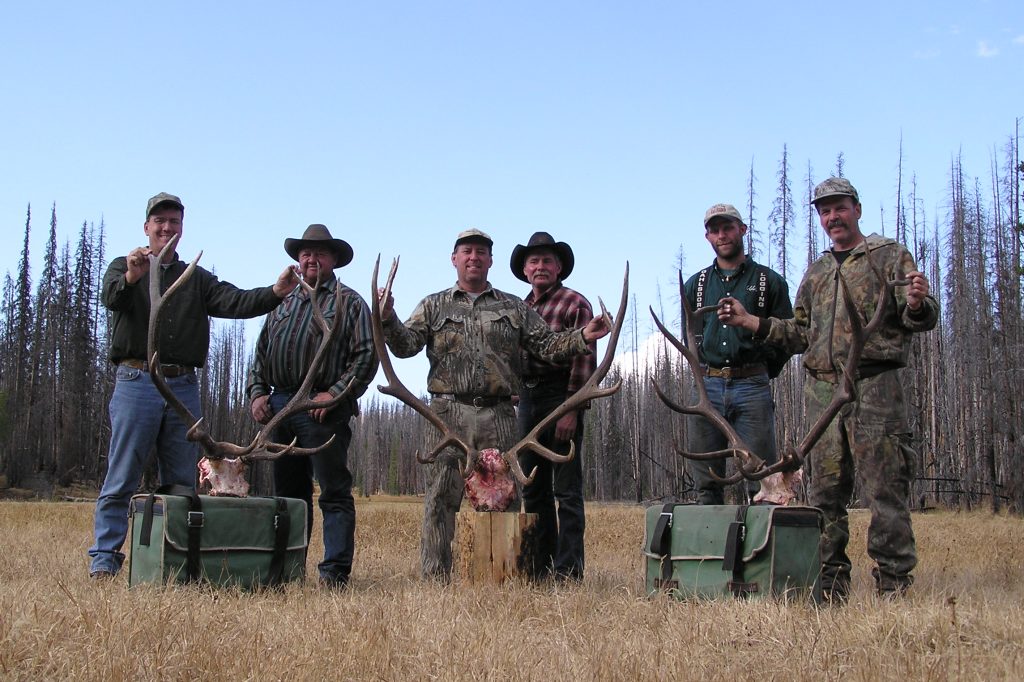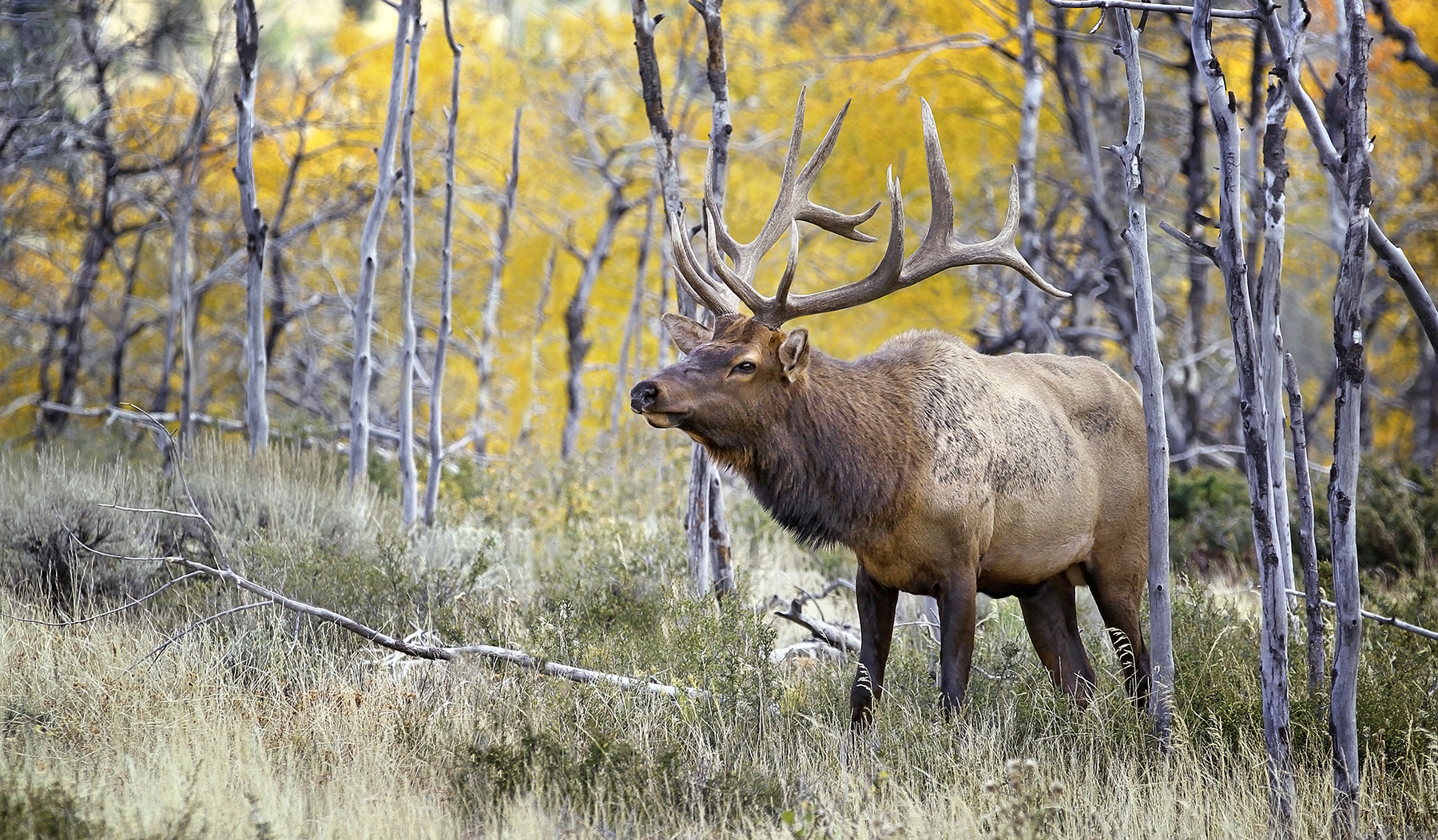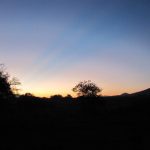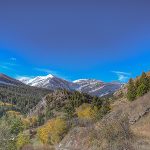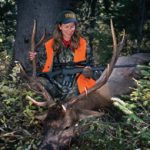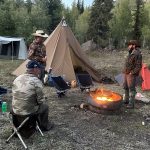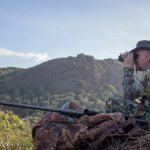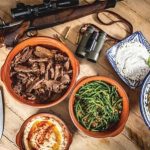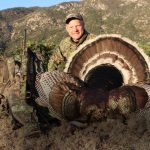Hunting elk on horseback in Idaho’s Frank Church-River of No Return Wilderness.
Photo above copyright VictorSchendelPhotography.com
My sleep-addled brain woke slowly as I removed my earplugs in time to hear Ron say, “He sure is asleep!”
I mumbled, “Not any more,” but then sat bolt upright in my cot as I heard the terrified whinnying of the horse outside our tent and a chorus of wolf howls from nearby.
I grew up in West Texas, where coyotes yapping at the moon are a common occurrence. This was not yapping–this was a rich cacophony of baritone and bass voices announcing the demise of an unfortunate elk, moose, or deer. Like the unseasonably warm weather, the wolves were an unwelcome addition to our hunt. But even though both represented obstacles that were conspiring against our attempts to take home a trophy elk, they could not dampen the joy of being in these imposing mountains that, two centuries before, had formed a formidable barrier for the Lewis and Clark Expedition.
Several days earlier, as the twin-engine Britain Islander skimmed across the rugged hilltops and sailed over the intervening chasms of the Salmon River Mountains, I had pondered Lewis and Clark’s Herculean feat in crossing these mountains. For us, the journey from Salmon, Idaho, to the grass airstrip that gave us access to the Frank Church-River of No Return Wilderness was a smooth one.
Set aside by Congress in 1980, the Frank Church-River of No Return extends across 2.3 million acres, making it the largest contiguous wilderness in the Lower 48. The name of this wilderness has two origins. “The River of No Return” reflected well the early days of exploration of this area because boats could navigate downstream on the Salmon River, but not upstream, because of the fast-flowing water and numerous rapids. The addition of the name Frank Church, a long-serving senator from Idaho who worked broadly for protection of natural areas, including authoring the Wild and Scenic Rivers Act of 1968, came in 1984.
I was confident as I could be when heading into the backwoods after game because I had been in camp once before with the same outfitter. On that first hunt, I fulfilled a lifelong goal of doing a real wilderness hunt, and in the process I collected a trophy black bear. This second trip would consist of the same key ingredients; high quality guides, a great base camp, and an extremely remote hunting area with only horses, mules, and our own feet and backs to find and bring back the game. Although we all had deer and bear tags, we three hunters–Ron Differ, my brother Randy, and I–had come primarily for the chance to hunt elk during the bugle.
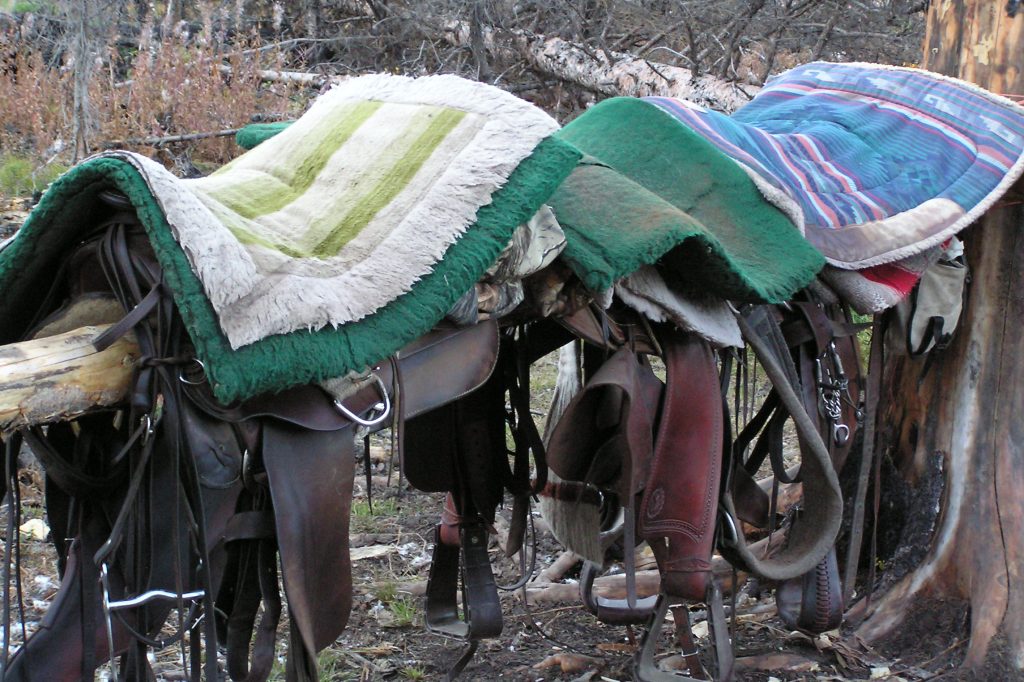
Idaho has a rifle season coincident with the period that should include the elk rut (mid-September to early October). Elk, however, don’t always decide to bugle during this time, especially, as in the fall of 2003, when the temperature is high enough to roast a chicken on an exposed rock.
Being a relative neophyte to elk hunting, and never having hunted during the rut, I was blissfully unaware of the steep odds against our hunting party as we made the five-hour ride from the airstrip to our alpine base camp. As we began the final, steep descent into the 6,500-foot elevation meadow where camp was located, the chime of the bells hanging around the necks of the grazing horses and mules, the warm, golden glow of the lantern light through the sides of the cook tent, and the smell of woodsmoke from the camp stove filled our senses with a comforting welcome. Randy commented that this combination of sounds, sights, and smells never failed to lift spirits at the end of a long, exhausting trail.
Our first hunting day was typical of our outfitter’s program: a predawn wake-up by a guide lighting our tent’s lantern and stove, a hot breakfast, a several-mile ride or walk into the surrounding country, still-hunting throughout the morning, an “elk nap” in the middle of the day, glassing the afternoon away, traveling back to base camp in the dark, a hot dinner eaten in an exhaustion-induced daze, and a final grateful collapse onto the cot. The only discordant note from this first day came from the lack of animals spotted by our three two-man teams.
For guide Gary Gingerich and me, the second day was much the same, except that we found elk tracks on top of our previous day’s horse tracks on the main trail to camp. I was also thrilled when we still-hunted to within forty yards of a mule deer doe, two fawns, two young bucks, and a 2 1/2-year-old 4-pointer. Nowadays I live in Georgia, and I regularly see whitetail deer, but mule deer always elevate my heart rate. To me, their ears appear to be two feet long and completely full of thick, soft hair. These six deer inspected us nervously and then moved slowly down slope and out of sight. Though fulfilling, seeing the mule deer could not remove the nagging worry that hot weather and wolf packs might foil our search for elk. That night, the same story repeated itself as the other hunters and guides drifted back into camp–they, too, had seen plenty of heat, dust, and flies, but no elk.
Like the two before it, day three dawned bright, dry, and with the threat of increasing temperatures. However, this morning, Randy and his guide, Dave, along with Gary and I, had risen and left camp even earlier than usual so that we could reach a distant ridge near the headwaters of Bear Creek. Gary and I left Randy and Dave just short of the ridgeline that would mark the boundary between our respective hunting areas. We continued to the ridge, where we unbridled our horses just before 8 a.m., tethering them with their halters to trees in an island of young pines.
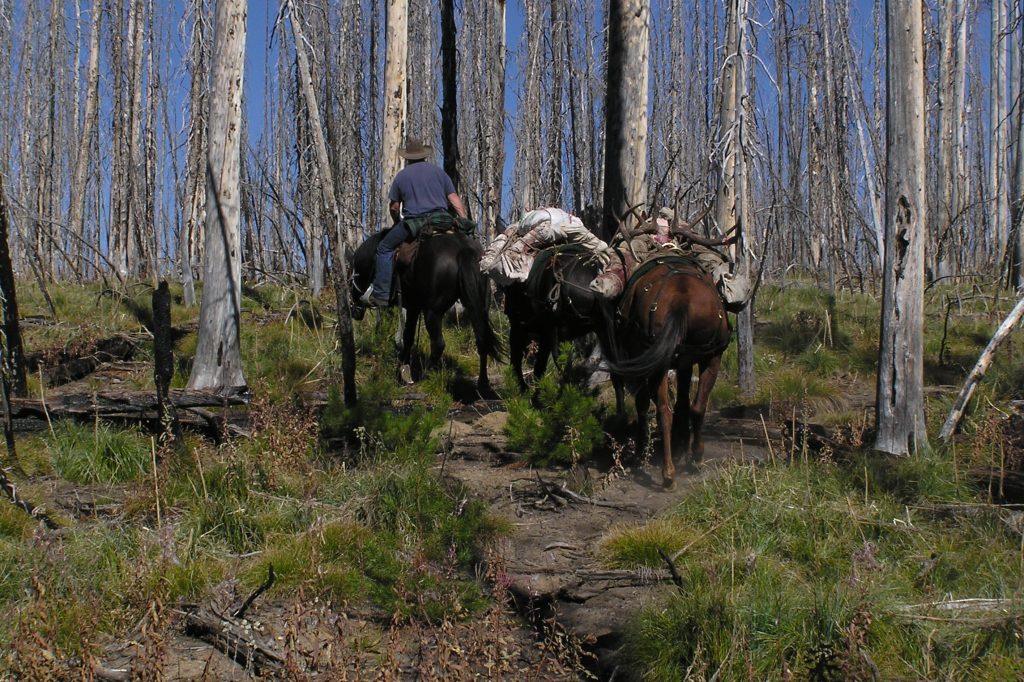
We had traveled no more than fifty yards from the glade when I thought I heard a distant bugle. Gary looked at me doubtfully when I told him what I had heard. His skepticism came from my repeated attempts in the days prior to turn braying mules, singing birds, and creaking trees into bugling elk. However, the bull almost immediately sounded off again. This time the elk’s clear notes seemed to match the dry, crisp, alpine coolness.
When Gary unleashed his response bugle, the elk gave an immediate answering grunt. We moved farther along the ridge while waiting for another call. We did not have to wait long as we carefully picked our way along the ridge. This next call sounded closer and was not a grunt, but a full-blooded bugle. We would conclude later that we were working two bulls, or maybe more accurately, two bulls were working us, but at the time we thought it to be one very talented performer.
For the next hour and a half our hunt followed a scripted pattern, one that hunting-video producers, I am sure, wish they could capture: Gary called; the elk responded with grunts and complex bugles; we moved slowly and carefully along the ridge before answering; Gary called again; after a brief pause, the elk responded. Forty-five minutes passed, and Gary had to decide whether to go after the bull or try to set up and entice him to us. After a short discussion, we chose to set up just below the ridgeline.
Gary motioned to the tree he wanted me to sit beneath and whispered, “I’ll stay behind and to your right to try and draw the bull’s attention away from you.” Our stand appeared to be nearly perfect; the wind was in our faces, coming from the direction of the bugling bull, and we had a good view of the valley below and the slope opposite us. However, calling elk is a fluid process. After only fifteen minutes on our stand, Gary joined me to say that, because the steadily lessening volume of the bull’s grunts suggested he was moving away from us, we might have to go after him. Gary gave another blast from his tube and my heart skipped a beat because the answering call seemed to be right on top of us. Gary switched to a cow call and then followed up immediately with a bugle.
The elk answered, and Gary whispered urgently, “There he is–he’s a six-point!” and then, because I was looking at the opposite slope, he asked, “Can you see him?”
I answered “No,” but then a golden flash in the valley bottom made me glance in that direction. I raised my rifle just as the elk moved behind a stand of fire-killed trees. The bull stretched out his neck and let out a mosaic of sounds. Gary cow-called and then bugled, and the bull responded immediately. More cow calls emanated from Gary and as I watched through my scope, the bull turned and faced our position. Though he remained screened, I could just make out the curve of his barrel-like ribcage. As he turned in our direction, he began a series of barks. Each time he barked, his ribcage gave a sudden jerk due to the violent expulsion of air.
In answer to the barks, Gary bugled long and loud and then mewed through his cow call. I slowly raised my right leg so that the tree and both legs would brace me. But as I slid my right elbow onto my raised knee, my right leg began to tremble uncontrollably. That wouldn’t work. I lowered it back to the ground and rested my supporting hand across my still-steady left knee.
After an eternity, I watched through my scope as the bull slowly swiveled to his right. First, his nose inched out from the screen of trees. As Gary and the bull continued to exchange insults, his eye appeared and then the base of his antlers, followed by his impossibly thick neck and finally, ever so slowly, his shoulder slid into view. The recoil from my rifle rocked me back a fraction of a second after the cross hairs rested behind his shoulder. As I worked the bolt of my rifle, the elk froze and then turned slowly to trot into the stand of dead pines that occupied the valley floor. The faint rattling of the elk’s feet in the timber followed. Gary threw his arm around my shoulders as I stumbled to my feet and exclaimed, “Now, was that worth the price of admission?”
“Unbelievable, absolutely unbelievable,” was my answer.
The next moment Gary asked the million-dollar question. “How did your shot feel?”
I answered slowly, “My sight picture was just behind his shoulder, so I think it was solid.” Gary, too, felt the shot was good because the bull had momentarily frozen, rather than bolting immediately out of the valley. He also thought he had seen a flash of antlers as if the bull had fallen somewhere in the timber.
Then he spoke the words I hate the most: “We’ll just wait and give him time to die or lie down.” No matter how sensible the advice, I have no patience for waiting to see if I messed up a shot. But we waited. And then after ten minutes or so, and with me muttering a prayer under my breath, we slowly made our way down the slope.
When we reached the spot where the elk had stood when I first fired, we found no blood. We cast out farther, but we still did not find any blood. And then, fifty yards to our left, the bull thrashed on the other side of a downed tree. I shouldered my rifle and aimed, but Gary stopped me with the words “Wait, but if he gets up, hit him again.”
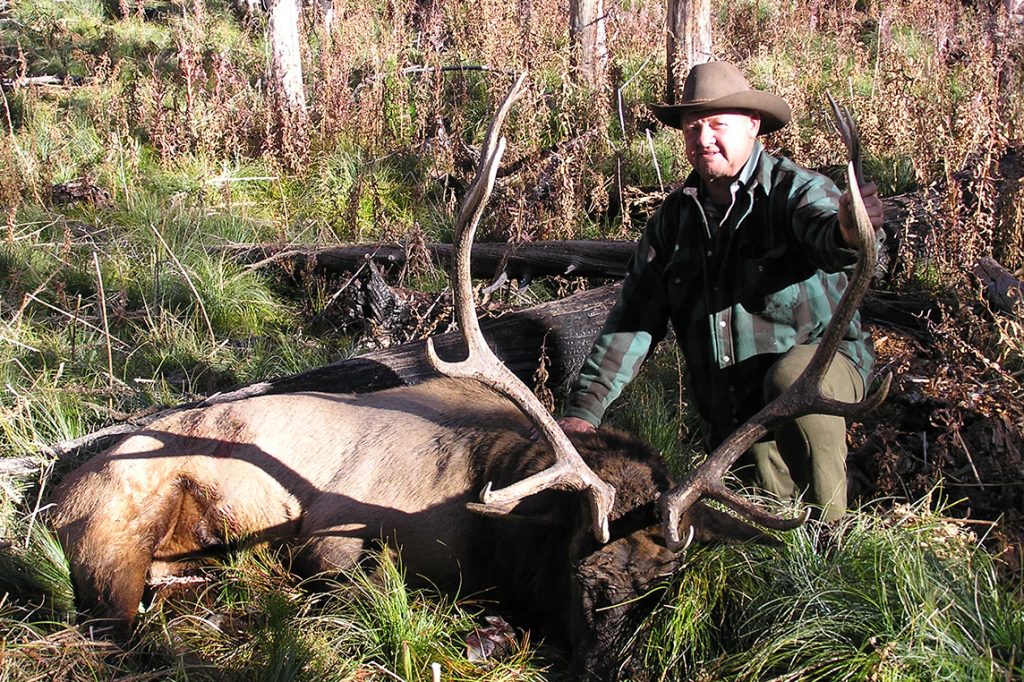
I needn’t have worried. The elk was done, and after a five-minute wait, we approached the ultimate symbol of a wilderness hunt in western North America.
As I ran my hands through his luxurious mane and down his golden back, I marveled that the combination of lousy weather and hungry wolves had done their worst and yet still had not defeated Gary and me. I then ran my hands over the long, pine pitch-stained antlers, and savored the sweet, musky smell that I remembered from my only other elk. This time, though, I was not contemplating a raghorn bull, but instead a monarch who had seen many winters, who had avoided numerous hunters, and who had likely fathered several successors. I was deeply grateful for this magnificent animal.
In the years since, this trophy has been the spark that endlessly rekindles memories of long trails that weave along mountain ridges and pass through alpine forests, and end, as darkness falls, with the chime of horse bells, golden light from the cook tent, and wood smoke hovering over frosted ground.
